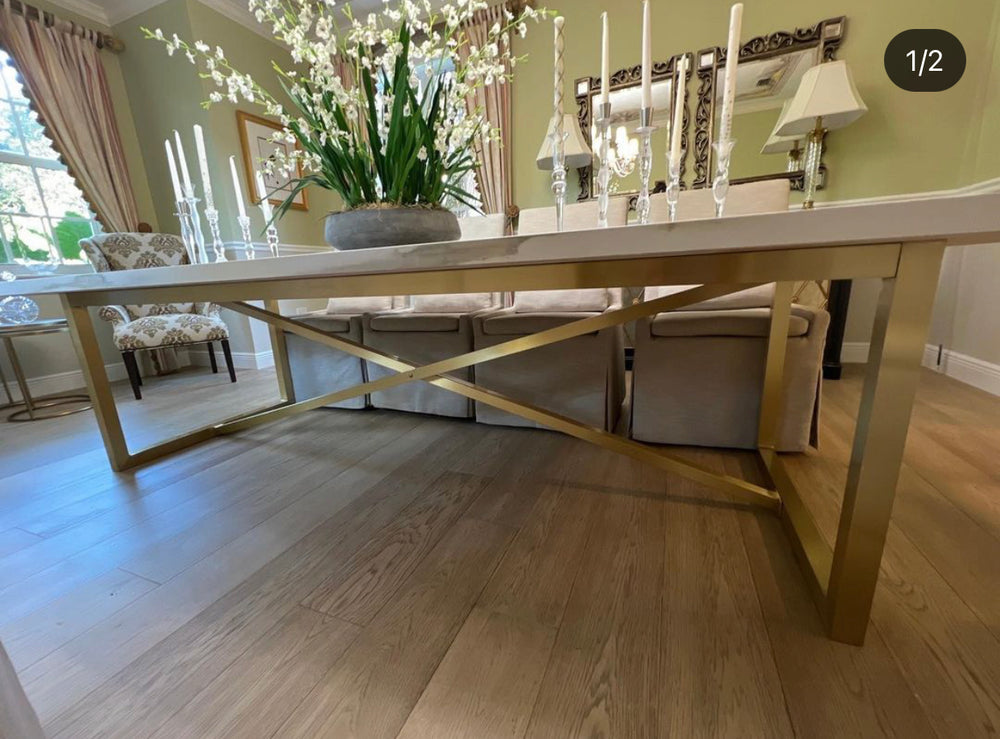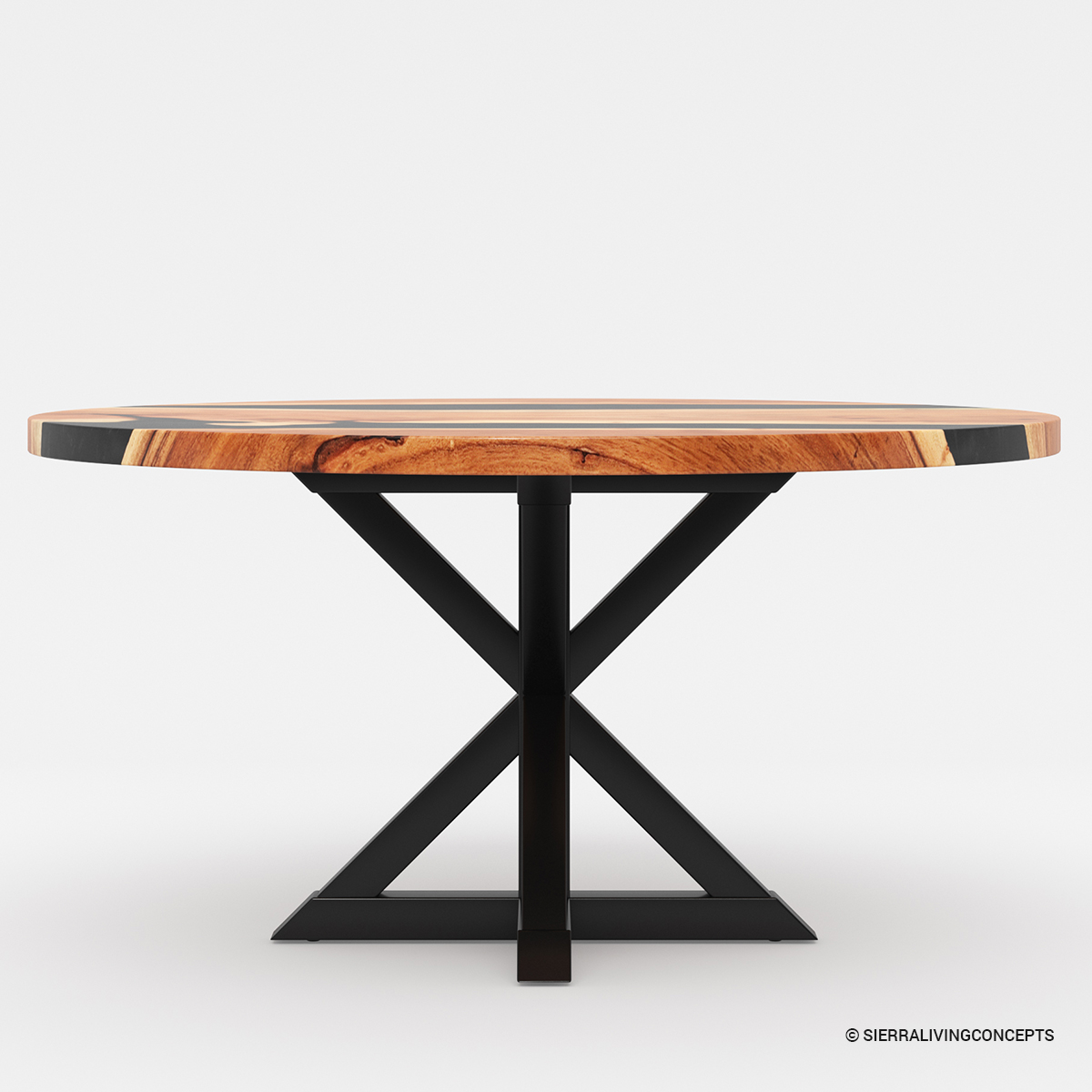Creative Ideas for Replacing or Refurbishing Your Dining Room Table Legs
Creative Ideas for Replacing or Refurbishing Your Dining Room Table Legs
Blog Article
Specialist Tips for Putting Up Dining-room Table Legs for Optimum Security
When it involves mounting dining-room table legs, attaining maximum stability is critical for both capability and aesthetic appeals. The process begins with picking the appropriate products and hardware, followed by thorough alignment and consideration of weight distribution. Each action plays a vital duty in making sure that the completed item endures everyday use without jeopardizing safety or layout stability. Understanding the nuances of these elements can substantially affect the overall result. What particular techniques can boost security also further?
Select the Right Legs
When picking the appropriate legs for your dining-room table, it is important to take into consideration both functionality and appearances. The legs you choose will considerably influence the overall design and stability of the table. Evaluate the table's intended use; if you expect regular events, sturdier legs, such as those made from strong wood or steel, might be a lot more appropriate, as they use raised longevity and support.
Conventional eating tables normally vary from 28 to 30 inches in height, so ensure the legs align with this criterion for convenience. Tapered legs can add a modern touch, while transformed legs could convey an extra timeless aesthetic.

Select Appropriate Hardware
Just how can the appropriate equipment improve the security and durability of your dining-room table? The choice of ideal equipment is vital to guaranteeing that the legs of your table are securely attached and able to endure routine usage. High-grade screws, bolts, and braces give the essential strength to support the weight of the table, in addition to any type of additional tons positioned upon it during celebrations or dishes.
When choosing screws, choose for those made from long lasting materials such as stainless steel or brass, which stand up to rust and preserve integrity in time. The length of the screws is equally crucial; they must permeate deeply right into the table's framework without jeopardizing honesty. For bolted links, take into consideration using lock washing machines to stop loosening up due to resonance or motion.
Furthermore, using corner braces can add extra support, specifically for bigger tables or those with larger tops. These braces distribute weight uniformly and assist preserve the table's form. Making certain that the hardware you choose is suitable for the particular materials of your table will even more enhance its overall stability and longevity, enabling you to enjoy your eating experience for years ahead.
Ensure Appropriate Positioning
Proper positioning of eating area table legs is essential for both visual charm and practical security. Misaligned legs can bring about an uneven tabletop, which may not just be visually unappealing however also compromise the table's use. To attain ideal alignment, begin by gauging the range from the table's edges to the leg accessory factors. This makes sure that each leg is located equidistant from the sides, developing a balanced look.
Make use of a level during installment to validate that each leg is perpendicular to the table top. This step is important, as also minor disparities can escalate into considerable stability concerns in time. It is a good idea to mark the wanted leg placements on the bottom of the table with a pencil or useful reference covering up tape before securing them. This technique functions as a visual guide, permitting for modifications as required.
Moreover, confirm the alignment after the preliminary screws are tightened, as adjustments might be needed prior to completely securing the hardware. By focusing on proper alignment, you not just enhance the table's general design but also ensure that it continues to be functional and secure for many years to find.

Take Into Consideration Weight Circulation
After ensuring correct placement of the dining-room table legs, it is necessary to think about weight distribution to enhance security and capability. dining room table legs. Proper weight distribution is important in protecting against making sure and wobbling that the table can support its desired lots without risk of tipping or breaking down
When placing the legs, guarantee they are put at equivalent distances from the center of the table to uniformly disperse the weight across the framework. Consider the weight of the table top and any items that will regularly rest on it, such as tabletop devices or ornamental pieces. Tables with much heavier surfaces must ideally have legs positioned closer to the edges, as this takes full advantage of the base of support and decreases the danger of instability.
Furthermore, if the table is intended for usage in a high-traffic area, consider making use of larger materials for the legs or including supporting elements, such as cross-bracing or a reduced rack - dining room table legs. These adjustments can help maintain equilibrium and protect against moving throughout usage. Eventually, a well-considered weight distribution technique will considerably enhance the table's total performance, ensuring it continues to be a functional and appealing focal point for your eating space
Test Stability Before Use
Checking the security of the dining-room table prior to use is a vital step that needs to not be ignored. Making certain that the table is secure and secure can stop accidents and extend the lifespan of the furniture. Begin by using gentle stress to various points on the table surface area. Push down on the original site center and after that along the sides, observing any type of wobbling or shifting. Recognize the legs or joints that might require modification. if the table reveals instability.
Next, examine that all screws and bolts are tightened up effectively. Loosened connections can lead to instability and potential damage with time. If necessary, make use of timber adhesive on joints to improve security, making certain to allow sufficient drying out time.

Verdict
In final thought, the installment of dining-room table legs needs mindful factor to consider of materials, hardware, positioning, and weight distribution to accomplish maximum security. By selecting strong legs and high-grade fasteners, making sure precise alignment, and dispersing weight evenly, the structural stability of the table can be dramatically boosted. Performing a stability examination before normal use further makes certain that the table will withstand day-to-day pressures, consequently giving a trustworthy and secure dining experience.
When it comes to mounting dining space table legs, attaining optimum stability is vital for both functionality and aesthetics. The legs you choose will dramatically impact the total layout and stability official statement of the table (dining room table legs). Basic dining tables typically range from 28 to 30 inches in height, so ensure the legs align with this standard for comfort.Appropriate placement of eating room table legs is essential for both aesthetic charm and useful security.In verdict, the installation of dining room table legs needs careful factor to consider of products, hardware, weight, and positioning distribution to attain maximum security
Report this page